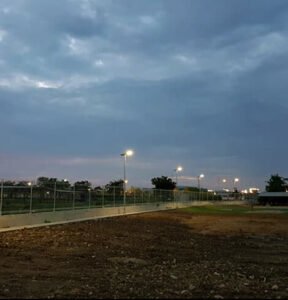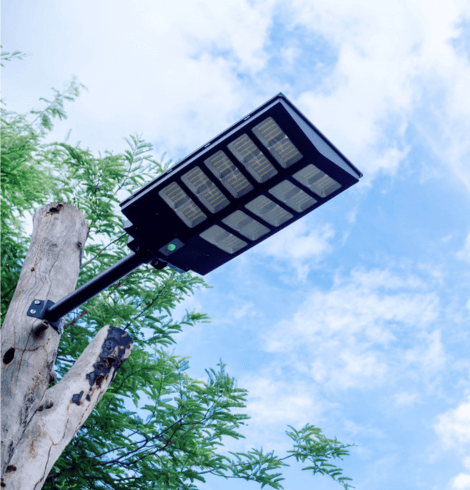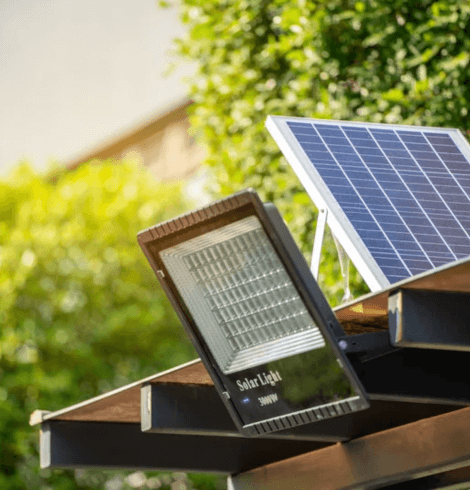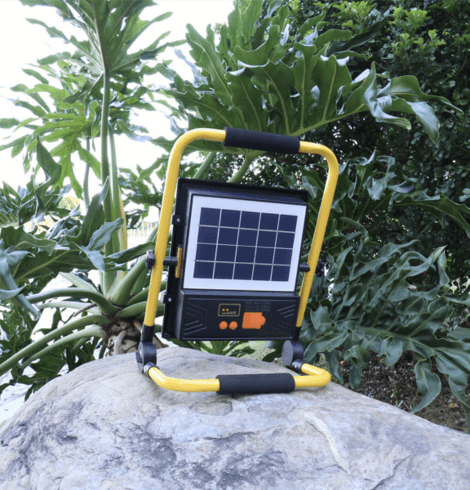Introduction
When planning a solar street lighting project, one of the most important—and often overlooked—considerations is determining the optimal distance between lights. Proper spacing doesn’t just influence the project’s aesthetics; it critically impacts safety, energy efficiency, and overall project costs.
Whether illuminating residential neighborhoods, bustling urban streets, quiet pedestrian pathways, or busy highways, understanding how to space your solar street lights effectively is essential to creating well-lit, safe, and cost-efficient environments. This guide will provide you with clear, practical insights into determining the ideal spacing for your solar street lighting installations.
Table of Contents
ToggleWhy the spacing matters
Proper distance between solar street lights is critical because it directly impacts safety, efficiency, project costs, and regulatory compliance. In simple terms, correct spacing ensures roads and paths are evenly illuminated, maximizing visibility and safety for both pedestrians and drivers, while also using resources effectively.
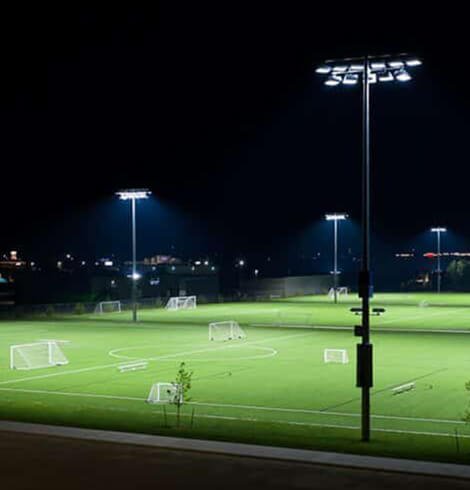
When lights are spaced correctly, you prevent dark spots, enhancing safety by allowing clear and consistent visibility. Uniform illumination helps drivers spot hazards early, significantly reducing accident risks. Additionally, accurate spacing optimizes each solar unit’s energy consumption, ensuring batteries store sufficient energy without wasteful overlap. Smart spacing decisions minimize unnecessary installation and operational costs, improving overall project profitability. Furthermore, adhering to proper spacing standards ensures your project meets local and international lighting regulations, thus avoiding compliance issues.
Ultimately, understanding why spacing matters positions you to create solar lighting projects that are safe, efficient, cost-effective, and fully compliant. Now, let’s look at exactly how you can determine the ideal spacing for your project.
How to determine the space of solar light
To accurately determine the spacing of solar street lights, consider the specific characteristics of the road type you’re illuminating. In simple terms, different roadways have different lighting needs, so spacing guidelines vary to ensure safety, visibility, and efficiency. The main categories you’ll often encounter are commercial urban/suburban streets, highways, residential streets, and pedestrian paths, each requiring its own approach.
Commercial Street: 25-40m
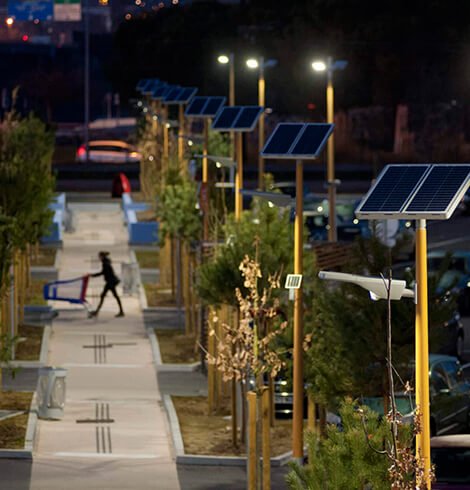
Commercial urban and suburban streets typically have moderate to heavy traffic, wider roadways, and a higher number of pedestrians. For these streets, use medium to tall poles (around 8–12 meters high), spaced approximately 25–40 meters apart. This spacing balances the need for bright, uniform illumination with the necessity of limiting infrastructure costs, ensuring consistent visibility across multiple lanes and sidewalks.
Highway: 40-60m
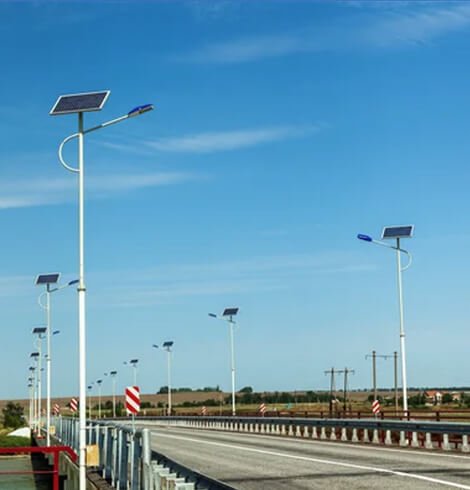
Highways, characterized by high speeds, wide lanes, and continuous traffic flow, require taller poles (around 12–15 meters or even higher) placed at wider intervals. Spacing for highways generally ranges between 40–60 meters or more, especially if powerful fixtures are used. The greater spacing leverages high-output LED luminaires that can adequately illuminate long stretches, reducing glare and providing safe, consistent illumination suited to high-speed travel.
Residential Street: 20-30m
Residential streets usually involve lower traffic speeds and narrower roadways, making them simpler to illuminate. Here, pole heights are typically lower (around 6–8 meters), and the recommended spacing ranges from 20–30 meters apart. This spacing maintains visibility without causing excessive brightness or wasted energy, ensuring adequate and uniform lighting for both drivers and local pedestrians.
Pathway: 15-20m

Pedestrian streets and paths, which have the least demand in terms of brightness, usually require shorter poles (around 4–6 meters tall), placed relatively closely—about 15–20 meters apart. This close spacing provides comfortable and uniform illumination, ensuring pedestrians feel secure and can clearly see pathways and surrounding areas, even during nighttime hours.
In summary, to determine optimal spacing, always start by identifying your road category, then choose appropriate pole heights and luminaires, and apply these recommended spacing guidelines accordingly. Next, let’s explore other factors beyond road type that can further influence your spacing decisions.
Is there other factors that affect the spacing
Beyond road type, several other critical factors influence the ideal spacing of solar street lights. These factors are essential to consider, as they can significantly impact illumination uniformity, energy efficiency, safety, and overall project cost.
Pole Height And Luminaire Power
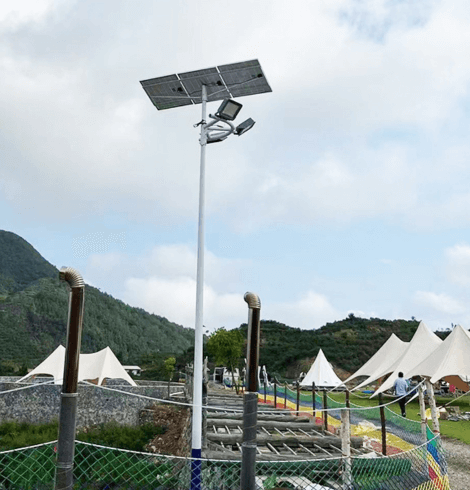
The first important factor is pole height and luminaire power. Taller poles allow wider spacing since their illumination covers more ground, while shorter poles require closer intervals to prevent dark areas. Similarly, higher wattage luminaires emit more brightness, enabling increased spacing between poles.
Beam Angle
Another critical element is the beam angle or optical distribution of the lamp. Wider beam angles distribute light across broader areas, permitting wider spacing. However, narrow beams require tighter intervals to achieve uniform lighting.
Environmental Conditions
Additionally, local environmental conditions such as trees, buildings, and other obstructions can affect spacing requirements, potentially necessitating adjustments to standard guidelines. High pedestrian or vehicle traffic areas might require closer spacing for enhanced visibility and safety.
Regulations And Standards
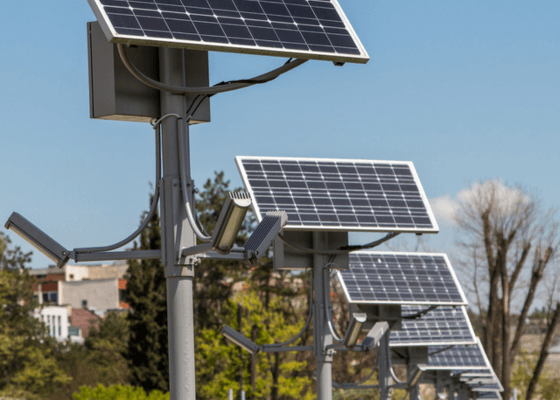
Lastly, compliance with local regulations and lighting standards is crucial, as these regulations often prescribe specific lux levels and uniformity ratios that dictate final spacing decisions.
By carefully evaluating these additional factors—pole height, luminaire power, optical distribution, environmental conditions, traffic patterns, and regulatory requirements—you can refine your spacing decisions, optimizing your solar lighting project for performance, safety, and cost-effectiveness. Next, let’s quickly summarize the key points we’ve discussed so far.
Quick Summary
In conclusion, the best distance between solar street lights isn’t a fixed number—it’s a carefully balanced decision shaped by several key factors, including the road type, pole height, lamp brightness, beam angle, environmental conditions, and regulatory standards. Generally, spacing ranges from about 15–20 meters for pedestrian paths, 20–30 meters for residential streets, 25–40 meters for commercial urban roads, and approximately 40–60 meters or more for highways.
To achieve optimal results, always begin by clearly identifying your project’s specific road category and its illumination requirements. Then, adjust your spacing based on the lamp’s pole height, lumen output, and beam angle, while accounting for any environmental or regulatory constraints. Ultimately, thoughtful consideration of all these factors ensures your solar street lighting project will deliver safe, uniform, and energy-efficient illumination.
Frequently Asked Questions (FAQs)
1. Can I increase spacing to save costs?
Yes, but only if it doesn’t compromise lighting quality. Wider spacing can reduce costs, but it may lead to dark spots or fail to meet safety standards. To increase spacing safely, you’ll need taller poles, higher wattage LEDs, or wider beam angles. Always run a photometric analysis to ensure proper illumination before reducing the number of lights.
2. Is taller always better for spacing?
Taller poles can increase spacing because they cover a wider area—but they’re not always the best choice. Higher poles cost more, may face zoning or structural limits, and can affect the look of the area. It’s important to balance height with lighting needs, aesthetics, and budget to get the best overall result.
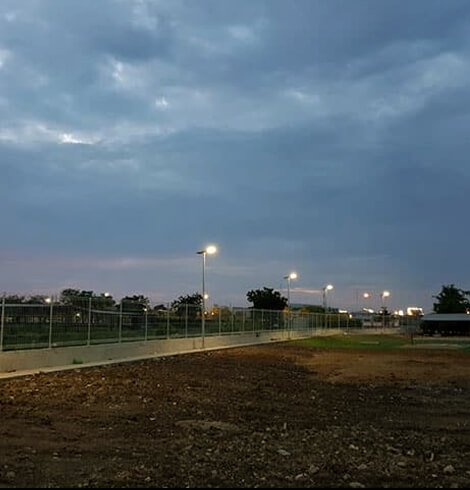
3. How do I verify the spacing is correct?
Use a photometric analysis to simulate your lighting plan. Tools like DIALux or AGi32 let you test spacing, lux levels, and uniformity before installation—ensuring your layout meets safety and performance standards.
4. Does solar versus traditional street lighting change spacing?
Not really. When properly sized, solar street lights follow the same spacing standards as traditional lights. The key difference is that solar lights are easier to deploy—no trenching or wiring needed—making them more flexible in certain environments.
5. What’s the best layout for residential streets?
A staggered layout is usually the best choice, offering balanced illumination with moderate spacing of around 25–35 meters. For narrower residential lanes, a single-sided layout can also work well if designed carefully.



